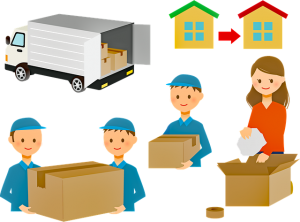All About Conveyor Belts: Damaging, Common Problems and Typical Failures

Where material handling is concerned, the conveyor on which the products are transferred is just as crucial as the products themselves. In a conveyor network, conveyor belts are a productive element. It is essential to set them up systematically and reduce any future delays or losses in order to maintain maximum uptime and system life. Conveyance systems are produced and made using conventional metallic parts can start showing signs of damage after extended periods of time, causing bothersome maintenance and downtimes.
While the primary objective of most conveyer belt, for instance, Dorner conveyor belts systems is to provide an ability to examine and transport goods across your facility, this is not feasible without the need for an implementation of a proper handling system. If the system loses traction due to increased volume operation, becomes brittle with corrosion, or is corroded with heat, the machinery’s working condition directly impacts the efficiency of your project performance and execution. Read the most common issues, causes of damage to the conveyor belt and ways of preventing it so that the output is optimized.
The Most Common Conveyor Belt Problems:
- Tracking of the conveyor belt, the task of positioning and maintaining a belt to sustain a particular path, is crucial to achieving the optimal performance of your system. When the belt moves from one edge to the other, also known as mistracking, your susceptibility to unpredicted downtime, harm to the belt, commodity damage and debugging maintenance problems. An uneven strain of the belt, and even a complete system failure, will arise when a belt runs off its normal course.
- When it comes to conveyor belts, low or high friction can have a significant impact on your operating efficiency. If your head pulley falls out, there is no longer enough leverage to hold the belt causing undue pulling, noticeable squeals, and slippage of the conveyance. Time-consuming repair work is often required to remove the accumulation, boost the wrap on the drive pulley or reset the tension requirements
- The majority of conveyor belt structures are traditionally built using metallic elements such as steel. When such rollers seize up, they may eventually grow rough edges which provoke the belt to mistrack along the centerline disproportionately. This not only poses a threat to safe operating conditions but can also harm the goods or packages being shipped. If there is a total belt breakdown you are likely to face a lengthy shutdown time.
- The primary purpose of a conveyor belt is to make sure that material travels efficiently across the system. The entire operation can be obstructed when this is compromised and manufacturing can be stopped. If the goods or packages that are being shipped catch on sharp corners, undergo rigid lateral changes or travel along a rusted chute ground, they can allow obstructions to build up and form. Like any of the other complications with conveyor belt, a blockage can quickly be equated to hours of lost revenue and dollars that cannot be retrieved.
- Items being extracted along the belt will wear out the layer of the belt over time. This is particularly true for abrasive items, such as iron ore, or where the conveyors work at a high rate of speed, high volume and extraction of rocky content. These abrasive items may also get misdirected in many other areas, such as below or along the edges of the belt, allowing avoidable wear of the belt. Using the right belting type for the materials being handled will lower the rate or probability of belt injury.
- Even after release at the leakage point, material that stays adhered to the lower part of the conveyor belt is considered as ‘ carryback. ‘For many conveyor modules, Carryback can trigger a variety of problems. In terms of damage to the belt, carryback decreases the belt’s productivity and lifespan – particularly if the carrying back layer thickens or hardens over time. Additionally, when carryback is trapped to other conveyor elements, it can continuously contact the belt and wear the belt away efficiently. Based on a variety of variables there are several various types of belt cleaning products. In fact, their primary purpose is to eradicate carryback on the belt; to keep a clean belt free from potentially expensive problems caused by carryback.
- Massive and voluminous material can harm conveyor rollers, frames, and belt. When the material bumps and becomes massive or excessive, rollers become less efficient. The belt is extended to soak up the forces and causes stress once the lumps adversely affect between the rollers. Over time the belt may be disfigured by the adverse effect. Impact rollers and idlers are a good solution for decreasing the material force of impact, which in turn will decrease the wear percentage on your belt. Impact rollers and idlers compared to the standard rollers/idlers secure the belt by collecting and transmitting the impact forces from material impact damage.
- A belt cleaning device that is either unsuitable for your application or inappropriately installed will cause serious damage to the conveyor belt. For instance, belt scrapers are effective cleaners but the belt might be torn by a rusty carbide-tipped blade. It’s essential that your application uses the right type of scraper blade, whether that’s polyurethane or carbide, and something more protected. Routine maintenance is for whatever reason the most efficient way of preventing serious harm to the conveyor belt. Servicing will pinpoint any potential dangers or complications, areas of improvement and parts that have been worn or continued to fail. This involves worn scraper blades which present the conveyor belt as a risk of physical damage.
While replacing the conveyor belt components is the simple response to these difficulties, the truth is that such challenges are often reoccurring and have to be supplanted again in the coming years. If you have encountered any of these or any other major problems, you know that the overall production output is just as good as the individual elements. The Dornerconveyors offer a non-traditional immediate solution to conveyor belt systems that rely on metal.






